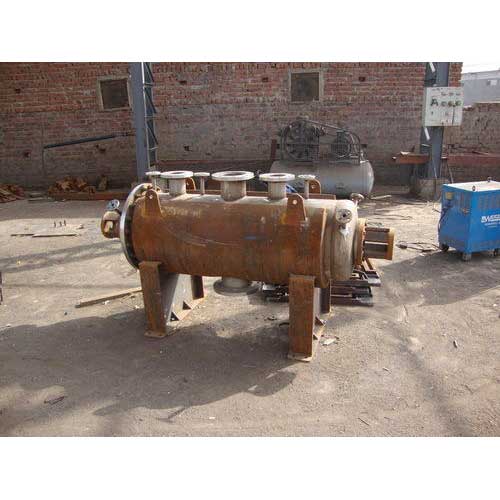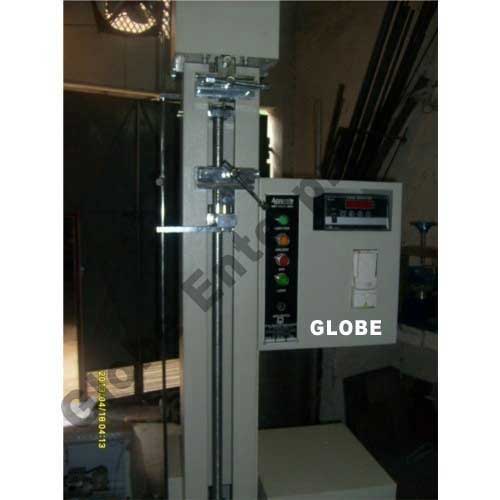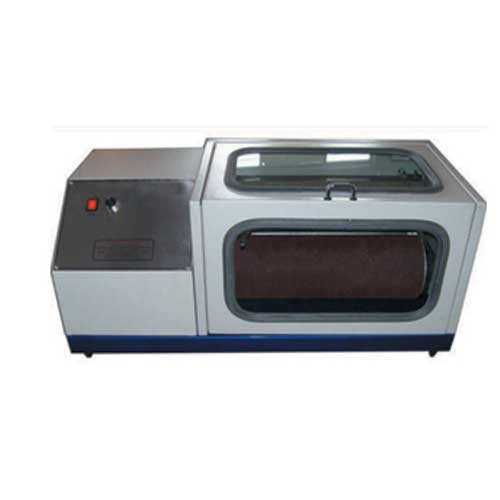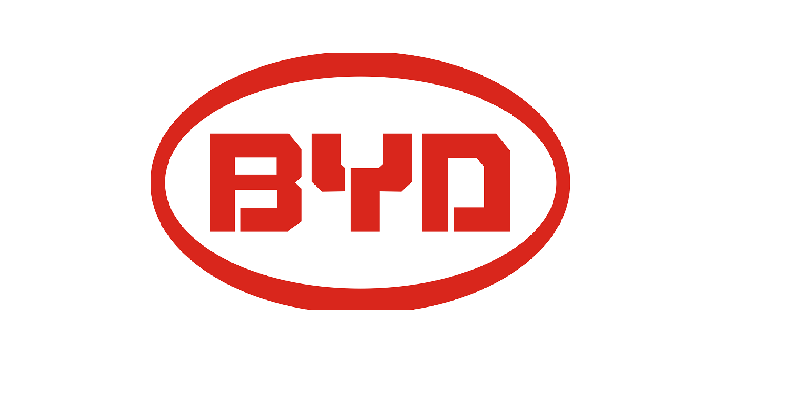Schedule a Call Back
Preventing High Temperature Corrosion
 Technical Articles
Technical Articles- Oct 07,13

Abstract: This article introduces practical techniques pioneered by Mr S P Shenoy, metallurgist from the Indian Institute of Technology (IIT-Mumbai). The techniques involve use of specially designed protective coatings on steel before heating in open atmosphere to protect from corrosion due to oxidation and decarburization. Furnace downtime due to corrosion of furnace refractory lining and heat loss is prevented due to protective coating used on refractory.
Advantages of using the protective anti-scale coating technique to prevent high temperature metal corrosion include substantial reduction in shot blasting/pickling time after heat treatment, improving surface finish of heat treated components by reduced scaling and pit marks, prevention of quench cracks, salvaging fully finish machined components during re-heat treatment, substantial reduction in decarburization during hot rolling and hot forging, decarburization control and uniform hardness in automobile leaf spring manufacturing, scale reduction in titanium heat treatment, protection of critical areas of pressure vessels during heat treatment.

Advantages of using the protective refractory coating technique to prevent high temperature corrosion of refractory lining include substantially increased refractory lining life, reduced furnace or boiler downtime, uniform heating in furnace/boiler, increased heat emissivity in furnace/boiler, reduced fuel consumption due to increased heat emissivity, reduced furnace/boiler outer shell temperature.
Introduction

Oxidation and decarburisation of steel take place when steel is heated in an electric furnace or oil fired furnace, in the presence of air or products of combustion. Oxidation leads to numerous problems like scale pit marks, loss of dimensions, bad quality surface finish of metal, rejections, quench cracking and increased expensive operations like shot blasting, machining and acid pickling.
Similarly, refractories linings made of alumina bricks in furnaces and boilers face problem of corrosion at high temperature. The effects of corrosion and thermal shocks are seen in forms of cracks in refractory lining, heat loss through cracks, increased fuel consumption due to heat loss and frequent downtime due to refractory problems.
High temperature corrosion of metals and refractory lining can be prevented by the use of special protective coatings. This article contains a number of case studies where specific problems of metal corrosion and refractory corrosion at high temperature was either successfully prevented or substantially reduced.
Understanding Oxidation & Decarburization of Metals at High Temperatures

When steel is heated in an open furnace in the presence of air or products of combustion, two surface phenomena take place: 1. Oxidation 2. Decarburization. Oxidation of steel may range from a tight, adherent straw-coloured film that forms at a temperature of about 1800C to a loose, blue-black oxide scale that forms at temperature above about 4500C with resultant loss of metal.
Decarburization or depletion of surface carbon content takes place when steel is heated to temperatures above 6500C. It progresses as a function of time, temperature and furnace atmosphere. The equilibrium relationship depends on the ratio of carbon dioxide to carbon monoxide. It is neutral to a given carbon content at a given temperature.
Harmful Effects of Oxidation and Decarburization: Oxidation leads to loss of dimensions and material as extra material allowance needs to be kept for scaling. Often, surface quality is deteriorated due to pitting. Metallurgical transformation during austenitising and subsequent quenching may be non-uniform. Surface hardness and strength are also lowered due to layer of scaling. Fatigue strength of heat treated product is reduced. This is especially true in case of automobile leaf springs.
Preventing Oxidation and Decarburization
Prevention of oxidation and decarburization is not only better than cure, it is profitable too. There are several ways to address problems caused by the two harmful reactions. Decarburized surface removal by machining operations after heat treatment, copper plating of thickness up to 0.025 mm prior to heat treatment or change of heating media to molten salt bath are some ideas. A number of protective atmospheres may be introduced like liquid hydrocarbon, dissociated ammonia, exothermic gas, nitrogen and endothermic gas. Fluidized bed furnaces and vacuum furnaces have also proven to reduce scaling. Switching over to grades which do not require heat treatment is possible in rare cases. However, most of the mentioned solutions pose a number of problems or practical difficulties. Availability of capital and human resource for using high-end furnaces is a major issue. Many small heat treatment shops cannot afford these solutions. Yet they are under mounting pressure to prevent oxidation and decarburization. Use of protective anti-scale coating has proven to be a logical solution to the problem of scaling and decarburization.
Insights into Characteristics and Use of Protective Coatings to Prevent Oxidation and Decarburization:
Use of protective coating has been found beneficial and cost-effective. An anti-scale coating is applied on components or billets to be heated before charging them into furnace. This anti-scale coating acts as a barrier between oxygen and metal. Care is taken to apply a uniform, impervious layer of coating on the component to be heated. Coating ensures prevention of scaling and decarburization. For exceptionally long heat treatment cycles of 10 to 15 hours, the extent of scaling and decarburization mechanism is substantially reduced. Anti-scale coating also reduces decarburization on billets and ingots during hot forging and hot rolling operations. Heat transfer from heating media to metal is not affected due to anti-scale coating.
No reaction with steel surface, no release of toxic fumes during use or heat treatment or storage, non-hazardous and economical implementation are other required characteristics of the coating. Coated tools and components must be able to be heat treated in air using a box type or bogie hearth; electric, gas or oil fired furnace.
Benefits of Anti-scale Coating; Industrial Case Studies and Success Stories

Coating eliminates need of salt bath or controlled - atmosphere equipment in many cases. Considerable savings in capital investment and operating costs are enabled by use of anti-scale coating. Due to prevention of decarburization, uniform surface hardness is achieved. Rejected components can be salvaged. Large savings are possible when plates of expensive alloy steel can be re-heat treated by using the anti-scale coating.
Figure explains the benefits of using coating during hot forming and solution annealing of stainless steel pipe fittings. Due to prevention of oxidation even in an ordinary oil fired furnace, pickling time could be reduced by 75%. Buffing can be eliminated or minimized in many cases. In manufacturing process of shearing blades of

expensive high carbon, high chromium grade steel, grinding allowance is substantially reduced when protective coating is used during heat treatment. Some other distinct case studies are enlisted below.
- Prevention of Quench Cracks
Forgings like knuckle joints and crank shafts when heat treated in furnaces of oxidizing atmosphere are susceptible to quench cracking. Quench cracks appear when stresses generated during quenching are higher than tensile strength of thin sections of forgings and due to differential quench severity at different areas. Chrome-moly grades of steel are most susceptible to quench cracks, which usually occur in the gear-end portion of the crankshaft. By coating the gear-end with an anti-scale coating, the cracking is prevented. By coating the gear-end with anti-scale coating, cracking could be effectively prevented. Reputed forgers of largest crank shafts in India use this technique.
- Reduction in Shot Blasting Time After Heat Treatment.

Operations like shot blasting, grinding, acid pickling, etc. do not add value, are expensive and time consuming procedures. These operations are necessary to remove adherent scaling from components and to enhance aesthetic appeal of forgings. Time required for these operations can be substantially reduced if a coating is applied on components before heat treatment. Aesthetic appeal of components is automatically enhanced without much effort as scaling is either prevented or reduced by using anti scale coating.
- Salvaging Fully Machined Components by Protecting during Re-heat Treatment
Often, fully machined forgings need to be re-heat treated for metallurgical reasons. However, there is no material allowance left for further scaling to take place and for subsequent machining or shot blasting.
In such cases, even small amount of scaling can render components to be scrapped. Use of anti-scale compound ensures prevention of scaling during re-heat treatment. Hence, huge losses can be prevented by salvaging fully machined components. Aesthetic appeal of components is retained. Coating itself can be removed after heat treatment by cleaning the forging with diesel, emery paper brushing or light wire brushing.
- Heat Treatment of Pressure Vessels:
Valve areas of pressure vessels are critical and need to be protected from scaling during thermal cleaning and heat treatment. This is achieved by use of anti-scale coating being applied only on areas where scaling needs to be prevented.
- Reducing decarburization during hot forging & hot rolling:

During hot rolling of special grades of steel where decarburization needs to be kept in check, unforeseen conditions like mill breakdown and unplanned downtime may arise. Even when the plant is closed for weekly holiday, furnace is shut off abruptly, leaving billets inside the furnace. In these cases, billets or ingots are left in furnace and are subjected to prolonged heating leading to decarburization and excessive scaling. In both cases, applying protective anti-scale coating on billets before charging them into the re-heating furnace ensures that billets are protected from decarburization. Reduced decarburization on automobile leaf springs leads to increased fatigue strength of leaf springs and greater reliability. Leaf springs heated after applying protective anti-scale coating show substantially reduced decarburization and scaling as show in adjoining image.
Understanding High Temperature Corrosion of Furnace/Boiler Refractory Lining
Furnaces and boilers have refractory brick lining that encounter the following problems:
- Thermal Shock Cracking: Thermal shock is unavoidable in furnace operation, however much care may be taken. Due to thermal shock, cracks are initiated in the refractory lining. Energy leaks through these cracks. This loss may be as high as 33% of the total energy consumption. This is the reason why fuel consumption is observed to be more after a time gap of say, six months from the date of relining the furnace, for the same level of production.
- Low Emissivity: Refractory lining has a low emissivity of 0.2 and hence hampers furnace efficiency. Improving this value to 0.5 or more will lead to fuel saving.
- Corrosive Action: Furnace oil contains sulphur dioxide and vanadium pent oxide. These compounds corrode the refractory lining.
- Vicious Sand Blasting Effect: The flame impinging on the refractory lining has a vicious effect of sand blasting.
- Carbon Deposit on the Burner Blocks: This problem is more pronounced when the fuel used is furnace oil. Unburned carbon deposits on the burner blocks, and over a period of time, sufficient carbon build up takes place. Due to this build up, the flame geometry is impaired and heating efficiency is lowered.
These problems lead to corrosion of refractory lining, thereby causing heat loss, increased fuel consumption and maintenance downtime of furnaces and boilers.
Preventing High Temperature Corrosion of Refractory Lining: Case Studies
A ceramic based protective refractory coating is used to fortify the furnace or boiler refractory lining. This coating becomes slightly plastic when exposed to high temperature and prevents dissipation of heat through the refractory. Care is given to apply a uniform coating as seen in adjoining image.
This technique has proven to prevent or reduce the above mentioned issues, thereby increasing the life of the refractory lining substantially. Fuel saving is enabled due to increased heat emissivity inside the furnace. Hence, furnace or boiler downtime and running cost are reduced, leading to increased productivity.
Summary
- Use of protective anti-scale coatings are established as an effective technique of preventing oxidation / scaling and decarburization during heat treatment, hot forging and hot rolling.
- Use of protective refractory coating has proven to be an effective technique in reducing furnace or boiler maintenance downtime and reducing fuel consumption.
- The coating techniques have simplified and accelerated many metallurgical heat treatment and furnace maintenance operations, saving a fortune in capital investment, improving quality, reducing costs and increasing productivity.
Related Products

High Pressure Reactor
Karadani Engineering Pvt Ltd is supplying a wide range of high pressure reactor.

Tensile Strength Tester
Globe Enterprises offers a wide range of tensile strength tester.

Din Abrasion Tester
Asian
Test Equipments offers a wide range of DIN abrasion
tester.















